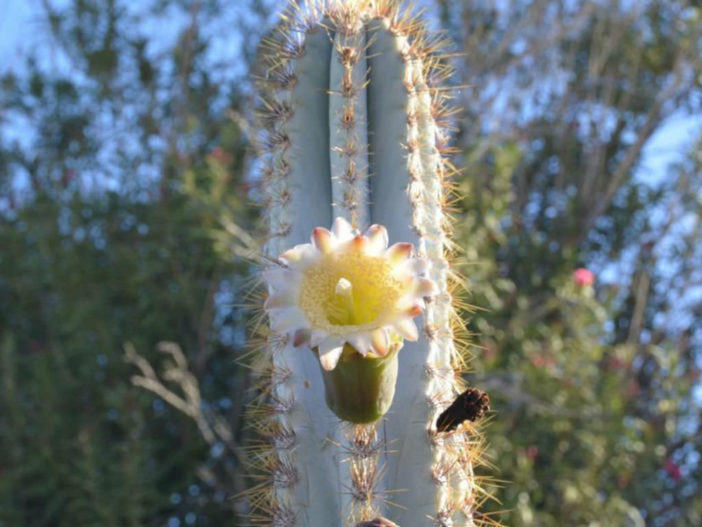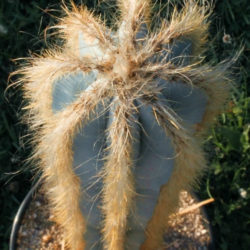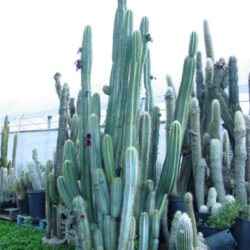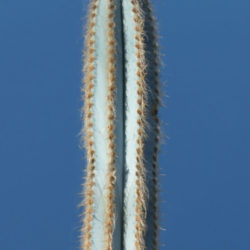Scientific Name
Pilosocereus pachycladus F.Ritter
Common Name(s)
Blue Columnar Cactus
Synonym(s)
Pilosocereus pachycladus subsp. pachycladus, Pseudopilocereus pachycladus
Scientific Classification
Family: Cactaceae
Subfamily: Cactoideae
Tribe: Cereeae
Genus: Pilosocereus
Description
Pilosocereus pachycladus is a spectacular tree-like cactus that develops a trunk with glaucous branches that turn sky blue to blue-green with age. It can grow up to 33 feet (10) tall, branching above the base. The branches are up to 4.4 inches (11 cm) in diameter, with 6 to 10 ribs lines with areoles that bear tufts of long white hairs and clusters of translucent yellowish spines that turn grey with age. Each areole bears 1 to 12 central spines measuring up to 1.2 inches (3 cm) long and 8 to 18 radial spines measuring up to 0.6 inches (1.5 cm) long.
The flowers are more or less funnel-shaped, whitish with greenish or reddish outer segments, up to 3 inches (7.5 cm) long and up to 1.8 inches (4.5 cm) in diameter. They appear in summer and last only one night. The fruits are reddish-purple, flattened globular, with magenta or red pulp and Shiny black seeds.
Origin
Pilosocereus pachycladus is native to north-eastern Brazil.

Hardiness
USDA hardiness zones 9b to 11b: from 25 °F (−3.9 °C) to 50 °F (+10 °C).
How to Grow and Care
Like most cacti, Cereus are fairly low-maintenance and hardy. Ensure they receive enough water without becoming waterlogged, especially during the summer, and fertilize them for best results. If the roots have become black or overly soft, the cactus could be experiencing root rot. Cut away the affected parts and replant. Most gardeners interested in cacti should be able to cultivate these without much problem.
It may become necessary to repot your Cereus if it outgrows its container. If so, ensure the soil is dry and then remove the pot. Knock away old soil, prune out rotted or dead roots, then replace it in a new pot and backfill it with new soil. Ensure not to overwater cacti planted in new pots, which can lead to root rot. It should be left dry for about a week and then watered lightly.
These cacti propagate pretty easily from cuttings. Simply sever a branch and replant in moist, well-drained soil.
See more at How to Grow and Care for Cereus.
Links
- Back to genus Pilosocereus
- Succupedia: Browse succulents by Scientific Name, Common Name, Genus, Family, USDA Hardiness Zone, Origin, or cacti by Genus
Photo Gallery
Click on a photo to see a larger version.


